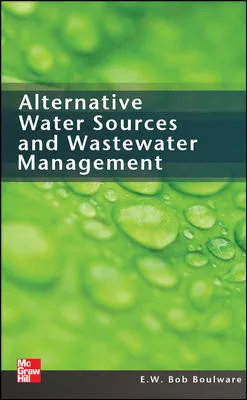U.S. housing recovery continues
Previous residential boom will not be replicated.

|
With recent statistics noting “air pockets” in the post-recession, stuttering economic recovery, new doubts are being cast on the future of America’s housing comeback. On a year-to-year basis, the expansion of additional residential construction seems to have plodded ahead at a low double-digit rate with expectations of a forthcoming pickup, even if that rate is modest by previous standards.
But even such moderate expectations have lately been giving way to new fears of reversal as the upcoming fiscal year — and its problems of debt ceilings, Obamacare and budget deficits — begin to take center stage. Pessimists are even hinting at a reversal of the current construction level that has barely reached one-third of the 1.7 million new housing starts that had become routine by the early part of the last decade.
Logical analysis would indicate that neither the new pessimism nor belief in the return to housing’s “golden days” are in the cards. However, considering a U.S. population of 320 million — a doubling from the mid-1900s — continues to necessitate modern residential facades, inclusive of the latest accommodation construction progress has made available in the areas of power generation, heating, air conditioning and physical expansion.
This will require a reasonable annual level of new housing starts, upgrading and expansion to service a population that will likely reach 360 million by the 21st century’s mid-term. A reasonable volume expectation will likely call for annualized housing starts of close to 1 million, eventually, but 700,000 for now. Changing economic and financial circumstances of America’s dramatic population values indicate the following:
- The lifetime asset focus of homeownership has been rapidly replaced by long-term leasing or even multimonthly rental. The increased malaise of a chronically underemployed labor force adds to the critical importance of the need for geographical mobility to areas of employment needs.
- Although record-low mortgage rates, now rising, have been accompanied by stiffer financial institutional credit requirements, the days of making home ownership an entitlement by virtue of affirmative action, backed by Fannie Mae and Freddie Mac, are likely gone for the foreseeable future.
- With trillions of dollars of excess funds reposing on the bottom lines of banks and corporations, foreign investments by private as well as government funds are increasingly focusing on U.S. residential and commercial buildings. This has been especially true of China and Canada, whose strong currency and supplemental residential interest will continue to make these future allocations attractive; and lending support to projected future domestic construction and expansion for some time to come.
- Although the extent of America’s future economic recovery will play a vital role in the ultimate extent of the building industry, the combination of positive factors puts a solid platform under the current residential and commercial construction sector.
Energy production
In projecting the upcoming fiscal year forecast (Oct. 1, 2013 to Sept. 30, 2014), the wealth gap between regions involved in all aspects of energy production, refining, transmission and derivative conversion will reach record proportions as the new fiscal year wears on.
The positive results emanating from those states involved in all aspects of producing and exporting coal, oil, natural gas and even supplemental renewables also will gain substantial employment, and generate higher wages per hour and more liberal benefits. In order to gain a realistic grip on these results, it becomes obvious that those regions and their constituent states directed by legislators and governors more prone to emphasize economics over questionable “climatological purity” will enjoy substantial 2014 forward motion; while those motivated by following the Pied Piper of climatological experimentation will consistently lag behind.
The regions that overwhelmingly comprise success or failure going forward will play a dominant role in witnessing increasing economic expansion as opposed to greater duress in keeping their financial heads above water.
Broadly speaking, those sectors of the nation most effectively in tune with the freedom of entrepreneurial innovation, especially in the areas of energy development, have been concentrated in America’s Southeast and Southwest, as well as parts of the Mid-Atlantic and the North Central regions.
From the standpoint of those most disadvantaged vs. those most opportunistically benefitted, the predisposition of conservative vs. progressive political leaning plays a major role. This manifests itself in disproportionate entitlements, heavy state taxes and municipal employment benefit overloads that have to be carried by an ageing and flattening-out working populace.
Purchasing power parity
Although the producer price index (costs at the wholesale level) and consumer price index have been bumping along at roughly 2% inflation since the end of the Great Recession, the vast majority of America’s goods purchasers scoff at these tame year-over-year percentages. Since consumer demand comprises almost two-thirds of America’s near $16 trillion annual world-leading gross domestic product, purchasing power parity would seem a more realistic measuring stick.
Although purchasing power parity traditionally applies to the relative purchasing power of world currencies, it makes sense to analyze what the dollar can buy today as compared to a similar purchase one, two or five years ago. An informal analysis of dozens of primary family purchases seems to indicate that inflation is indeed alive and well, more in the high single-digit or low double-digits on many consumer products and services.
Since purchasing power parity is not dealt with as an ongoing reporting statistic by a federal government agency, the national media and the various publications reporting on inflationary, deflationary and disinflationary developments continue to lump all goods and services into an overall formula. This also is underwritten by the Federal Reserve Board in anticipating its approach to interest rates and supporting strategies such as quantitative easing.
Like all statistical reports that encompass all factors into a single number, these serve only to underscore the Central Bank’s remedial actions. These serve to balance the nation’s overall economic direction within a constant vigil between the extremes of deflation and inflation. This can best be described as over-simplification, especially in the arena of consumer goods.
Since the prices of a wide range of goods and services — such as the price of gasoline, milk, bread, housing costs and wearing apparel — are key to the ongoing inflationary/deflationary number, the Commerce Department and the Federal Reserve Board’s overall approach tends to be the only gyrometer by which to project its overall direction. These focus on federal funds interest rates, from which a multitude of commercial rates tend to emanate.
The producer price index, which deals primarily with raw materials and industrial components, tends to be more realistic due to its relationship to industrial/commercial production, which is based on worldwide trends.
The American part-time workforce
When the U.S. Labor Department issues its monthly unemployment rate, it usually follows with a raft of statistics that provide a true explanation of the precariousness of America’s shaky employment recovery. However, the great majority of those that follow this ongoing problem limit their attention by focusing on the current top number and whether it rises or falls. What everyone should look for is the labor force participation rate, which indicates what percentage of potential employment is working, part- or full-time. This is at the lowest level in decades.
Although only deeply involved analysts or investors parse these figures to the nth degree, the inflating phenomenon of part-time work is a darkening factor with which the nation will have to deal with for the following reasons:
• Because of the implementation of Obamacare, Dodd-Frank regulations and the continuing EPA squeeze on a varied mix of businesses, the part-time factor, already a significant component of the total U.S. employment figure, is on the verge of inflating “big time” come Jan. 1.
• The weekly hours worked indicator separating full-time employees, subject to the employer’s complete benefit package, from part-time is 30 hours. This is already becoming a powerful incentive for small businesses, especially, to pare down their workforces. It also has accelerated the search for technological replacements on the shop floor and back office to reduce employment costs even further.
• The part-time equation has become a major political factor as powerful labor leaders have requested union exemption, since it is more than likely that industrial unions already are down to a single-digit percentage of all working Americans.
• It is becoming increasingly apparent that the weak fabric holding together Obamacare will come apart at the seams. That is why even top shakers and movers from almost anywhere in the world come to the U.S. for serious medical treatment.
Unfortunately, the ultimate result of the Obamacare debacle will not only impact already soaring insurance premium costs, but will make it far more costly for major pharmaceutical corporations to advance their technological research. This will come in the form of higher taxes on all innovations, as well as having to become more competitive to resist government competition.
HELPFUL LINKS:
Looking for a reprint of this article?
From high-res PDFs to custom plaques, order your copy today!






